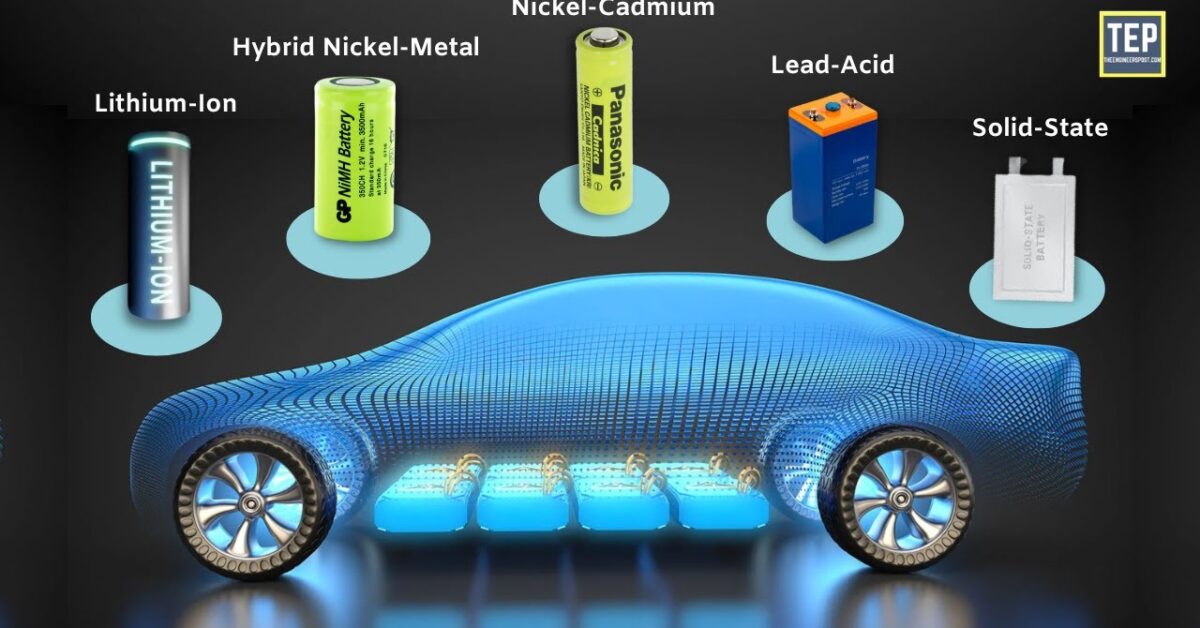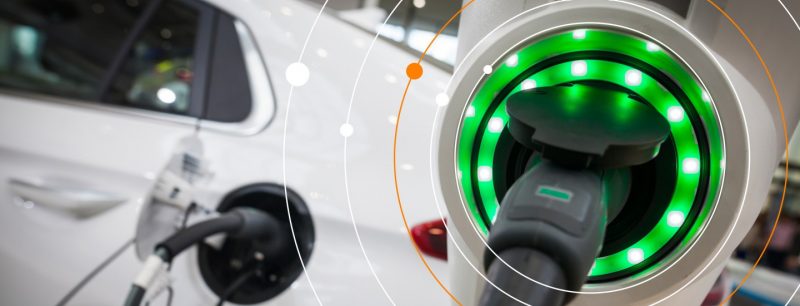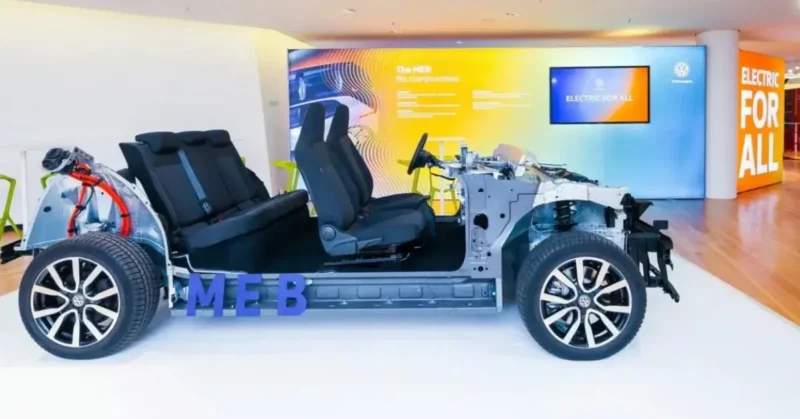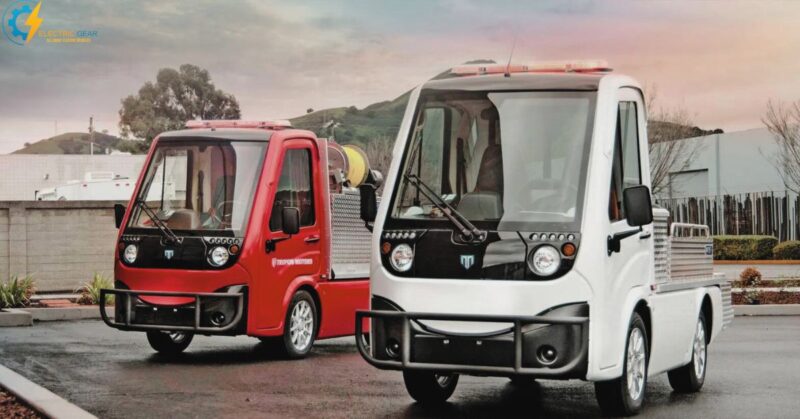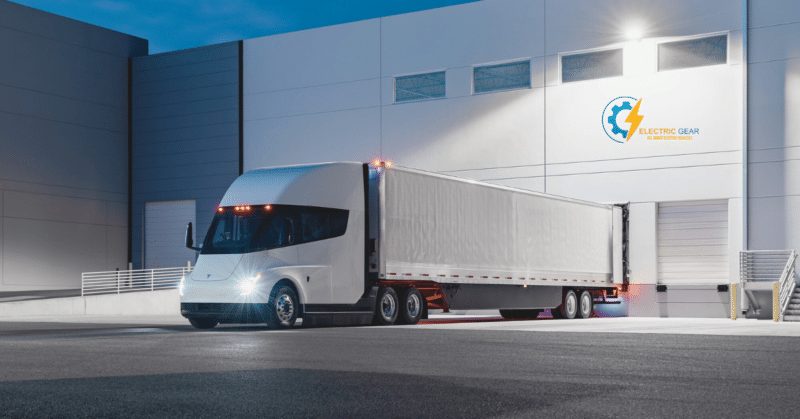Electric vehicles rely on battery power to operate, and as such, the type of battery used can significantly impact their performance, range, and overall cost. Several types of batteries are used in electric vehicles, each with its own advantages and disadvantages. The most commonly used batteries in electric vehicles today are lithium-ion batteries, which offer high energy density, fast charging times, and long lifetimes.
Other types of batteries used in electric vehicles include nickel-metal hydride (NiMH) batteries, which are less expensive but have a lower energy density, and solid-state batteries, which are still in development but offer the potential for even higher energy density and faster charging times.
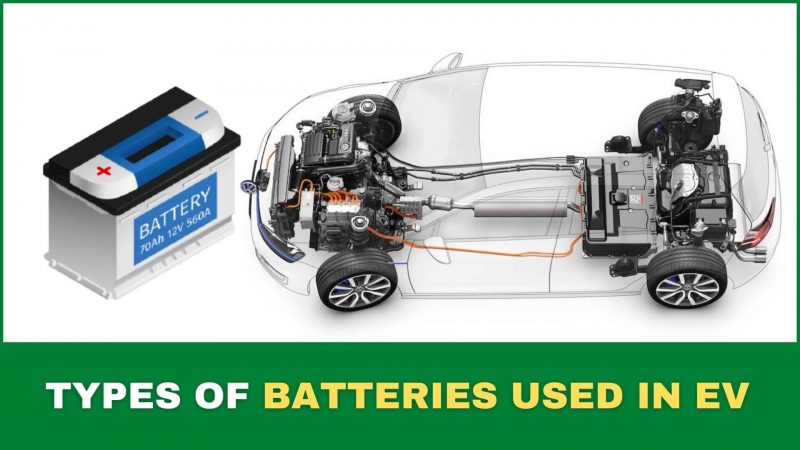
What are the Qualities for EV Batteries?
Types of batteries used in electric vehicles must meet many criteria to guarantee reliability and safety. High energy density, or the amount of energy stored per unit of volume or weight, is one of these qualities; so is good thermal management, which helps to prevent overheating and prolong battery life; long cycle life, or the number of charge and discharge cycles the battery can withstand before needing to be replaced; and fast charging capabilities, which allow drivers to recharge their vehicles and reduce downtime quickly.
In addition to being safe, dependable, and cheap to make and maintain, EV batteries should be eco-friendly. Achieving these characteristics is essential for the future development of sustainable transportation and the broad acceptance of EVs.
Types of Batteries Used in Electric Vehicles
- Lithium-ion (Li-ion) batteries: Li-ion batteries are the most common type of EV battery. They are known for their high energy density, fast charging capabilities, and long cycle life. Li-ion batteries are also relatively lightweight and compact.
- Nickel-metal hydride (NiMH) batteries: While less common in modern EVs, NiMH batteries were widely used in the early days of EV development. They have a lower energy density than Li-ion batteries but are known for their reliability and low cost.
- Solid-state batteries: This newer technology is still developing but shows promise for future EVs. Solid-state batteries use a solid electrolyte instead of a liquid electrolyte, which can provide higher energy density and faster charging times than Li-ion batteries.
- Lead-acid batteries: These are the oldest rechargeable battery type and are still used in some low-speed EVs. Lead-acid batteries are heavy, have a low energy density, and have short cycle life compared to other battery types.
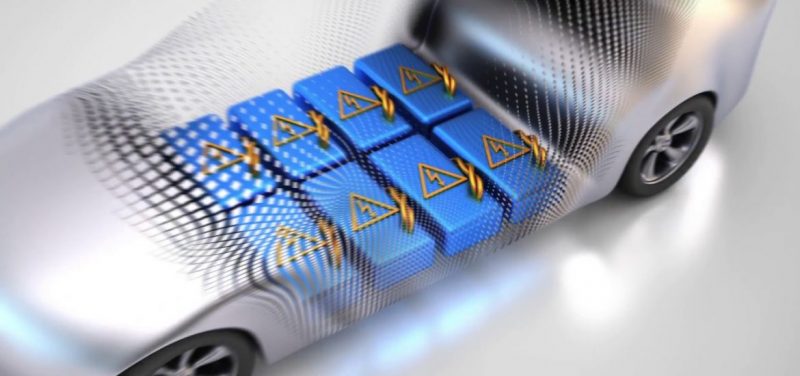
Each type of battery has its advantages and disadvantages, and the choice of battery type depends on factors such as cost, performance requirements, and available technology.
Detail of Some EV batteries
Today’s electric cars are powered by lithium-ion batteries (EVs). Compared to other battery chemistries, they have a greater energy density, faster charging times, and a longer lifetime. Yet, they have drawbacks, including high prices and safety worries. Technology advancements are enhancing the efficiency and security of EV-ion batteries.
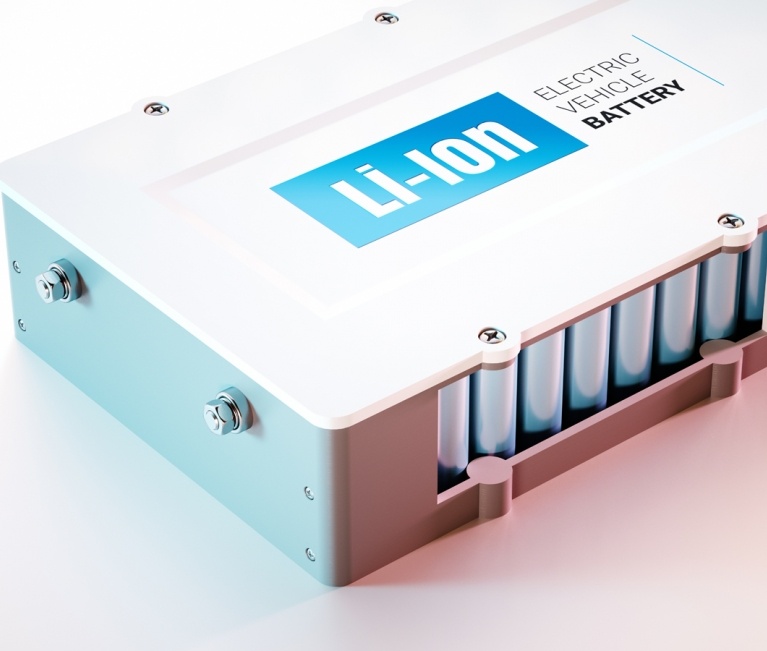
Lithium-ion Battery Classification
Lithium-ion batteries can be classified based on several factors:
- Cathode Material: Nickel-cobalt-aluminum (NCA), nickel-manganese-cobalt (NMC), lithium iron phosphate (LFP), and lithium titanate oxide are all examples of cathode materials that may be used in lithium-ion batteries (LTO). Energy density, safety, and affordability are just a few characteristics that vary between materials.
- Anode Material: The anode material can also vary, with graphite being the most common material. However, silicon and lithium titanate can also improve energy density and reduce charging time.
- Shape and Size: Lithium-ion batteries can come in different shapes and sizes, depending on the application. For example, cylindrical cells are commonly used in portable electronics, while prismatic and pouch cells are used in electric vehicles and stationary energy storage systems.
- Application: Lithium-ion batteries can also be classified based on their intended application, such as EV batteries, stationary energy storage systems, and portable electronics.
- Voltage and Capacity: Lithium-ion batteries can also be classified based on their voltage and capacity, with higher voltage and capacity batteries used in larger and more power-hungry applications.
Advantages and disadvantages of Li-on Batteries
Lithium-ion (Li-ion) batteries have become increasingly popular due to their high energy density and rechargeability. However, like any technology, there are advantages and disadvantages to using Li-ion batteries. Here are some of the most notable ones:
Advantages of Li-on batteries:
- High Energy Density: Li-ion batteries can store a large amount of energy despite their compact size because of their high energy density. This quality makes them perfect for mobile gadgets like cell phones, notebook computers, and battery-powered cars.
- Long Lifespan: Li-ion batteries outlast other rechargeables like nickel-cadmium (NiCd) and nickel-metal hydride (NiMH) batteries. They may be repeatedly charged and discharged hundreds of times without losing capacity.
- Low Self-Discharge: Li-ion batteries may retain their charge for extended periods due to their low self-discharge rate. As a result, they are well-suited for usage in seldom-used devices like backup or safety gear.
- Fast Charging: With the help of fast charging technology, Li-ion batteries may be charged rapidly. This makes them an excellent choice for use in rapid recharging devices.
Disadvantages of Li-on batteries:
- Cost: Li-ion batteries are more expensive than other rechargeable batteries, such as NiCad or NiMH. It is mainly due to the cost of the materials used in their manufacture.
- Safety Concerns: Li-ion batteries are prone to overheating and can sometimes catch fire or explode if used or charged properly. They must be handled carefully and stored in the right conditions.
- Capacity Loss over Time: Li-ion batteries tend to lose their capacity over time, especially if exposed to high temperatures or constantly charged and discharged. It means that the battery life of devices that use Li-ion batteries may degrade over time.
- Disposal: Li-ion batteries cannot be disposed of in the regular trash and require special handling and disposal procedures. This makes them more difficult to recycle compared to other types of batteries.
Li-ion batteries have several benefits over other rechargeable battery types. Still, they also have certain drawbacks to consider when selecting a battery for a given device or application.
Nickel-metal hydride batteries
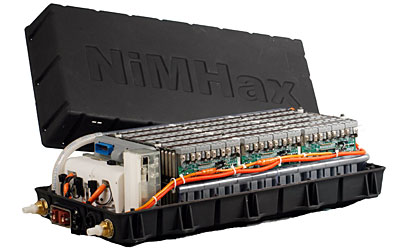
Nickel-metal hydride (NiMH) batteries are rechargeable batteries that use a combination of nickel oxide hydroxide (NiOOH) as the positive electrode and a hydrogen-absorbing alloy as the negative electrode. NiMH batteries were developed as an alternative to the nickel-cadmium (NiCad) battery, which suffers from the “memory effect” and toxic cadmium.
Higher energy density and reduced self-discharge rate are two advantages of NiMH batteries over their NiCad counterparts.
They can store more energy in the same space, making them useful for portable electronic devices like laptops, digital cameras, and handheld gaming systems.
However, NiMH batteries also have some drawbacks. They can lose their charge over time, even when unused, and have a lower power density than lithium-ion batteries. NiMH batteries are also more sensitive to high temperatures and can experience voltage depression if not properly charged and discharged.
Despite these limitations, NiMH batteries are still widely used in various applications, including hybrid and electric vehicles, power tools, and renewable energy storage systems.
Characteristics of NiMH Batteries: short points
Here are some key characteristics of NiMH batteries:
- Rechargeable: NiMH batteries can be recharged multiple times, making them a more cost-effective and environmentally-friendly option than disposable batteries.
- Energy density: NiMH batteries have a higher energy density than NiCad batteries, meaning they can store more energy in the same space.
- Self-discharge: NiMH batteries have a lower self-discharge rate than NiCad batteries, meaning they can hold their charge longer.
- Power density: NiMH batteries have a lower power density than lithium-ion batteries, meaning they cannot deliver as much power quickly.
- Temperature sensitivity: NiMH batteries are more sensitive to high temperatures and can experience voltage depression if not properly charged and discharged.
- Memory effect: NiMH batteries do not suffer from the “memory effect” that can occur in NiCad batteries.
Advantages and Disadvantages of NiMH Batteries
Advantages of NiMH Batteries:
- Environmentally friendly: Because of their long lifespan and reusability, NiMH batteries help keep waste out of landfills.
- High energy density: NiMH batteries are preferable to NiCad batteries because of their better energy density, making them useful in portable electronics.
- Low self-discharge rate: NiMH batteries may retain their charge for longer because of their low self-discharge rate.
- No “memory effect”: NiMH batteries do not suffer from the “memory effect” that can occur in NiCad batteries.
- Affordable: NiMH batteries are generally more affordable than lithium-ion batteries.
Disadvantages of NiMH Batteries:
- Low power density: NiMH batteries have a lower power density than lithium-ion batteries, meaning they cannot quickly deliver as much power.
- Temperature sensitivity: NiMH batteries are more sensitive to high temperatures and can experience voltage depression if not properly charged and discharged.
- Limited lifespan: NiMH batteries have a limited lifespan and can degrade over time, especially if not properly maintained.
- Longer charging time: NiMH batteries generally take longer than lithium-ion batteries.
- Lower voltage output: NiMH batteries have a lower voltage output than other rechargeable batteries.
Lead-Acid Batteries
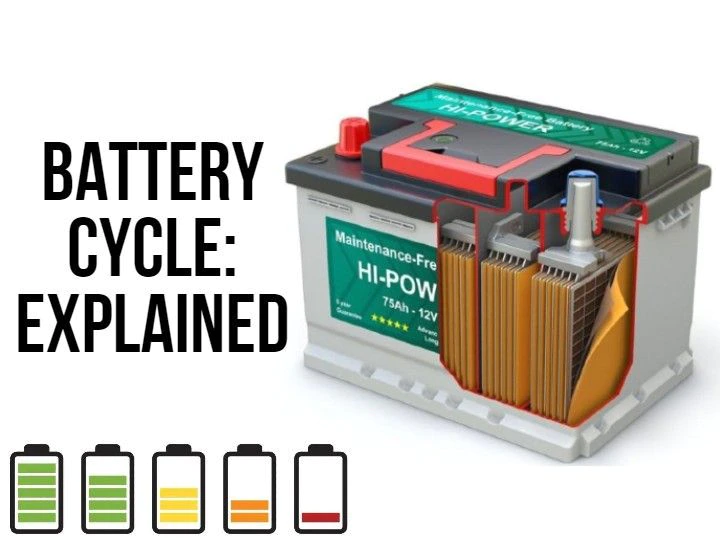
Lead-acid batteries are a type of rechargeable battery commonly used in vehicles and backup power supplies. They consist of lead plates immersed in sulfuric acid and water electrolyte solution. During discharge, the lead plates undergo a chemical reaction with the electrolyte to produce electricity.
The reaction is reversed when the battery is recharged and the lead plates are restored to their original state. Lead-acid batteries are relatively cheap and have a high power-to-weight ratio, but they are also heavy and require maintenance. They can be recycled, and their materials are used in various industries.
However, they also contain hazardous materials and can pose environmental risks if disposed of improperly.
Lead-Acid Batteries Characteristics:
- Lead-acid batteries are rechargeable batteries commonly used in vehicles and backup power systems.
- They comprise lead plates immersed in a sulfuric acid and water electrolyte solution.
- They have a high power-to-weight ratio but are also heavy and require maintenance.
- They can be recycled, and their materials are used in various industries.
- They contain hazardous materials and can pose environmental risks if not disposed of properly.
Advantages of Lead-Acid Batteries:
- Relatively low cost compared to other rechargeable battery types
- High power-to-weight ratio
- Suitable for high-current discharge applications
- A wide range of sizes and voltages are available
- Easily rechargeable
- Recyclable, with lead and other materials used in a variety of industries
Disadvantages of Lead-Acid Batteries:
- Heavy and bulky compared to other rechargeable batteries
- Require regular maintenance, including checking electrolyte levels and adding distilled water
- They can be damaged by overcharging or undercharging, shortening their lifespan
- Hazardous materials, including lead and sulfuric acid, require special handling and disposal methods to prevent environmental contamination.
- Limited cycle life compared to some other rechargeable battery types

Image credit: Google
What is the Best Rechargeable EV Battery?
There is no “best” rechargeable EV battery, as each battery technology has its strengths and weaknesses, and the optimal choice depends on the specific application and priorities. Here are a few examples of rechargeable EV batteries currently in use or under development:
- Lithium-ion (Li-ion) batteries are currently the most commonly used EV battery technology due to their high energy density and relatively long cycle life. They can be found in many commercially available electric cars.
- Solid-state batteries are a promising new technology that could offer higher energy density, faster charging times, and improved safety compared to Li-ion batteries. However, they are still in the early stages of development and have not yet been widely commercialized.
- Sodium-ion batteries are an emerging alternative to Li-ion batteries that offer similar performance characteristics but with potentially lower costs and greater availability of raw materials. However, they are still in the early stages of development and have not yet been widely commercialized.
Ultimately, the best rechargeable EV battery will depend on cost, performance, safety, environmental impact, and the vehicle manufacturers’ and end-users specific needs and preferences.

Imran is an experienced content writer who crafts engaging and informative articles for a variety of industries. With a keen eye for detail and a passion for storytelling, Imran delivers high-quality content that resonates with readers. Whether he’s writing blog posts, social media content, or website copy, Imran is committed to delivering compelling content that drives results.

